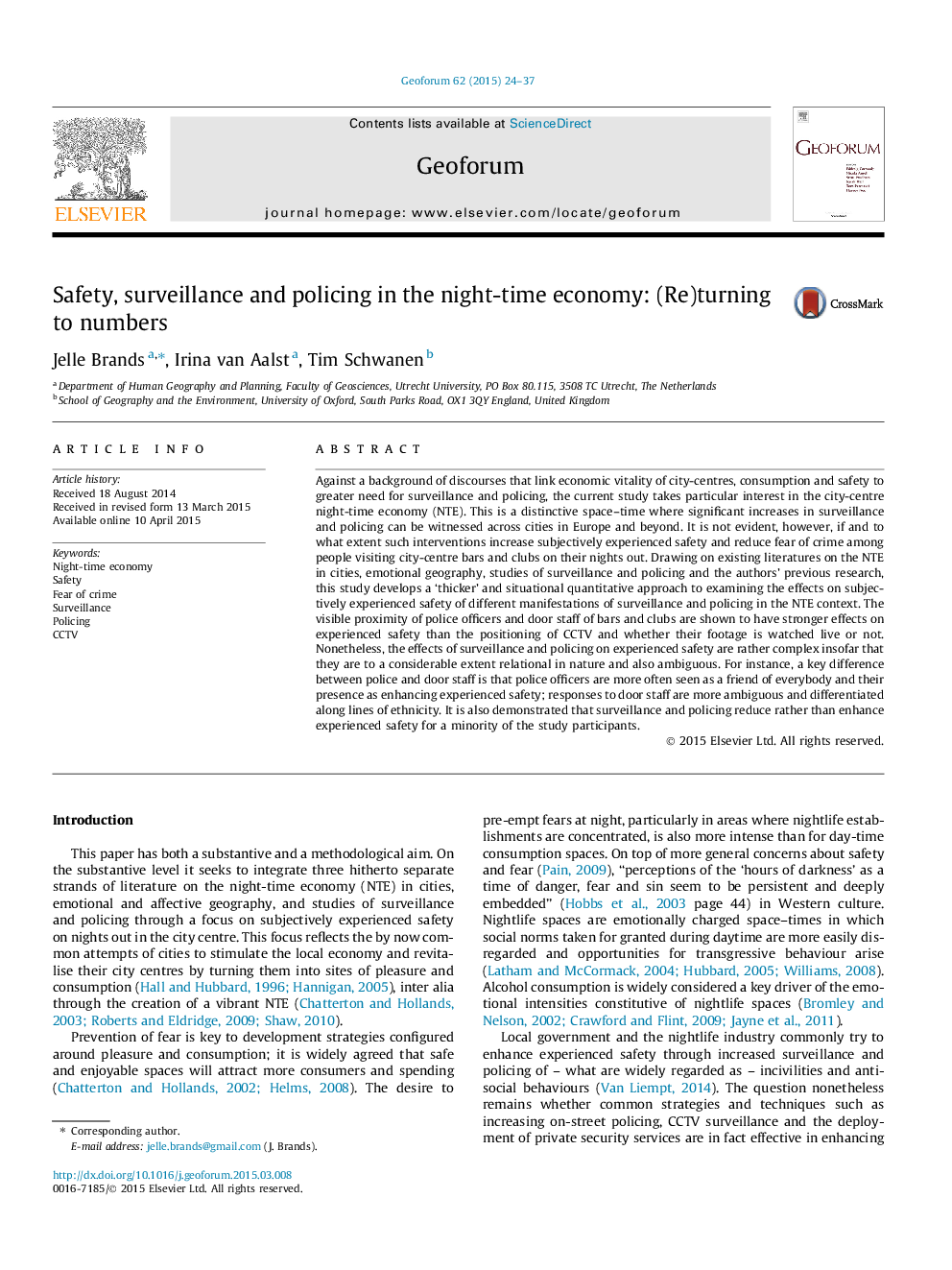| کد مقاله | کد نشریه | سال انتشار | مقاله انگلیسی | نسخه تمام متن |
|---|---|---|---|---|
| 5073567 | 1477127 | 2015 | 14 صفحه PDF | دانلود رایگان |

- For four paradigmatic nightlife situations, experienced safety is quantified.
- Police, door staff and CCTV bolster experienced safety for the majority of participants but not for all.
- The effect of proximity to police or door staff is at least two times bigger than that of CCTV.
- Effects also depend on the particularities of situation and participants' identity.
Against a background of discourses that link economic vitality of city-centres, consumption and safety to greater need for surveillance and policing, the current study takes particular interest in the city-centre night-time economy (NTE). This is a distinctive space-time where significant increases in surveillance and policing can be witnessed across cities in Europe and beyond. It is not evident, however, if and to what extent such interventions increase subjectively experienced safety and reduce fear of crime among people visiting city-centre bars and clubs on their nights out. Drawing on existing literatures on the NTE in cities, emotional geography, studies of surveillance and policing and the authors' previous research, this study develops a 'thicker' and situational quantitative approach to examining the effects on subjectively experienced safety of different manifestations of surveillance and policing in the NTE context. The visible proximity of police officers and door staff of bars and clubs are shown to have stronger effects on experienced safety than the positioning of CCTV and whether their footage is watched live or not. Nonetheless, the effects of surveillance and policing on experienced safety are rather complex insofar that they are to a considerable extent relational in nature and also ambiguous. For instance, a key difference between police and door staff is that police officers are more often seen as a friend of everybody and their presence as enhancing experienced safety; responses to door staff are more ambiguous and differentiated along lines of ethnicity. It is also demonstrated that surveillance and policing reduce rather than enhance experienced safety for a minority of the study participants.
Journal: Geoforum - Volume 62, June 2015, Pages 24-37